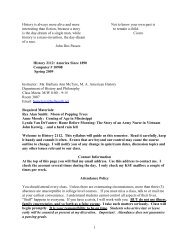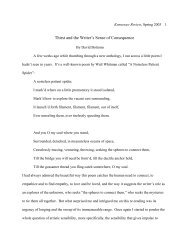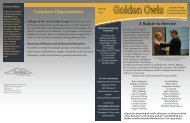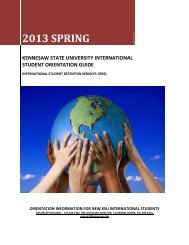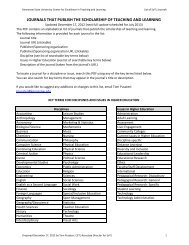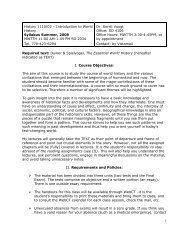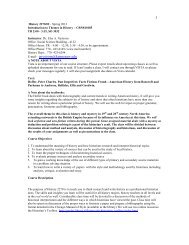Food, Gender and Cultural Hegemony - Kennesaw State University
Food, Gender and Cultural Hegemony - Kennesaw State University
Food, Gender and Cultural Hegemony - Kennesaw State University
You also want an ePaper? Increase the reach of your titles
YUMPU automatically turns print PDFs into web optimized ePapers that Google loves.
Cualli 138<br />
eaten, the context in which they are eaten, the utensils <strong>and</strong> furniture utilized,<br />
etiquette, <strong>and</strong> the question of who eats together. In addition, the meals of the<br />
popular classes invariably contrast with those of the elite. More elaborate rituals<br />
<strong>and</strong> manners are generally associated with the elite. Ceremonial occasions<br />
invariably called for more complex <strong>and</strong> symbolic meals with many more<br />
ingredients. In the fifteenth <strong>and</strong> sixteenth centuries eating practices <strong>and</strong> menus in<br />
Europe became much more sophisticated, so that important cultural change<br />
occurred in Spanish food ways even as Spaniards attempted to bring their food<br />
culture to the New World (Roche 237).<br />
In The Nahuas After the Conquest James Lockhart defined three broad<br />
stages in Mexican cultural evolution after the conquest, based on his analysis of a<br />
body of original Nahua documents over the period 1530 to 1770 (Lockhart 428).<br />
These were most specific with respect to language acculturation among the Nahua.<br />
Stage I included the conquest until 1550 in which there was little or no change in<br />
language. From 1550 to 1640 (Stage II) a variety of Spanish nouns were<br />
incorporated into the Nahua language. Stage III (1640-1770) included a full range<br />
of linguistic adaptation, though some words <strong>and</strong> certain grammatical uses were<br />
never adopted by the Nahua.<br />
For this paper I propose to view food ways as a kind of language, <strong>and</strong><br />
assume that assimilation of food ways underwent a process similar to that of<br />
language. In other words particular foods or main ingredients can be seen as<br />
nouns, cooking methods or combinations of ingredients as verbs, seasonings<br />
(including oil) as prepositions, <strong>and</strong> a meal might be a sentence or a poem. Spanish<br />
society might be viewed as separate from Indigenous society in terms of food ways<br />
for the first period. However, as time progressed there was a gradual mixing of the<br />
populations, both in residence <strong>and</strong> through miscegenation. A blending of food<br />
ways also took place.<br />
One of the notable aspects of this “mixing” process was that for both<br />
peoples--the Spanish <strong>and</strong> the Nahua--there were foods that were viewed as<br />
indispensable to their culture. The most important of these for the Spanish was<br />
[Type text]



